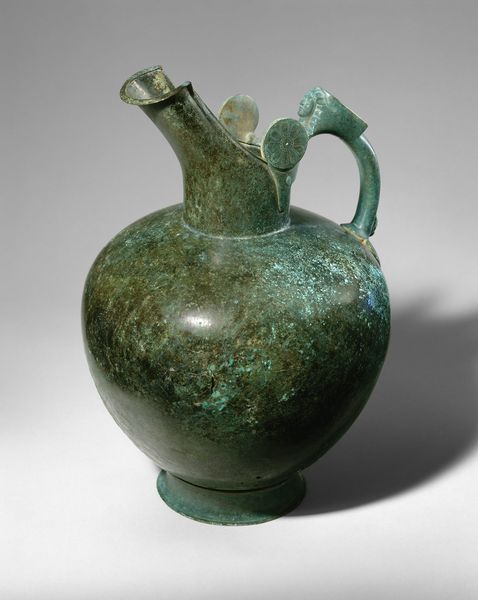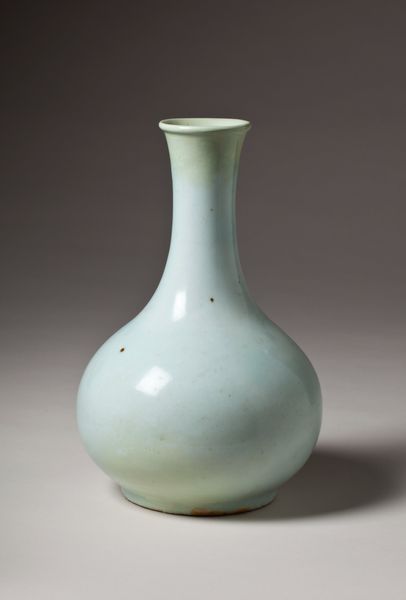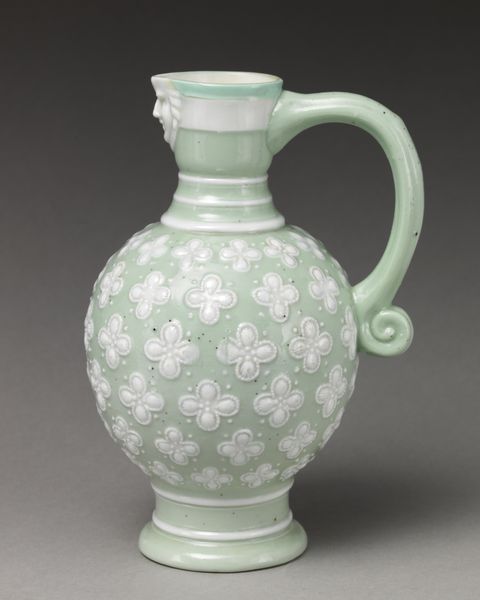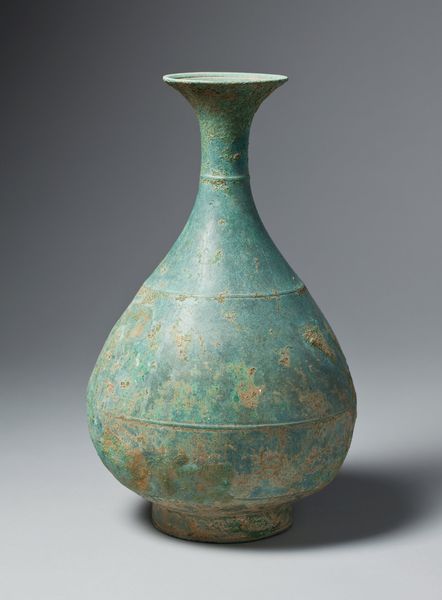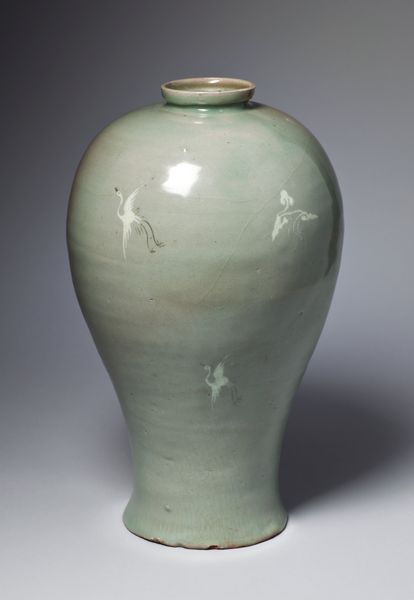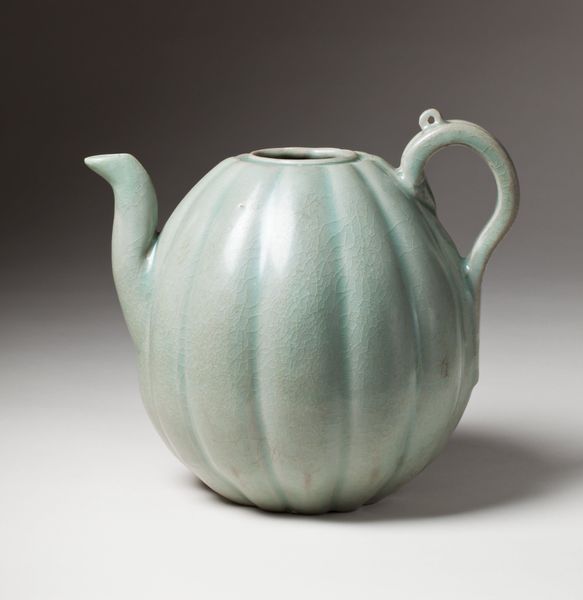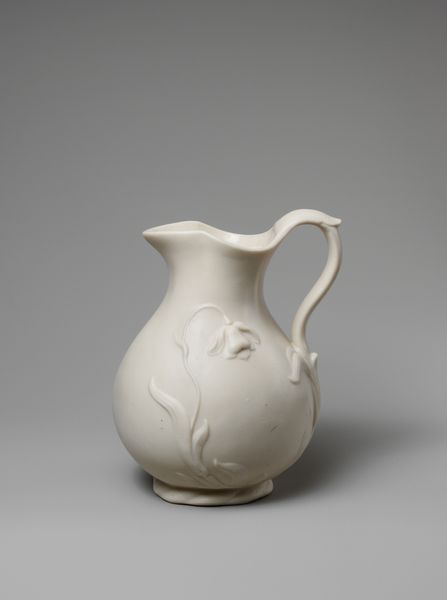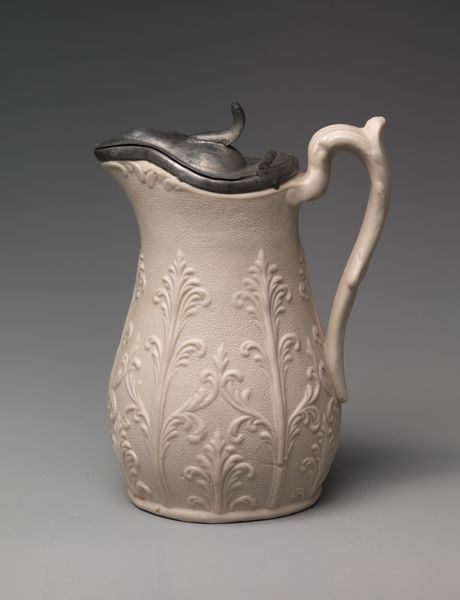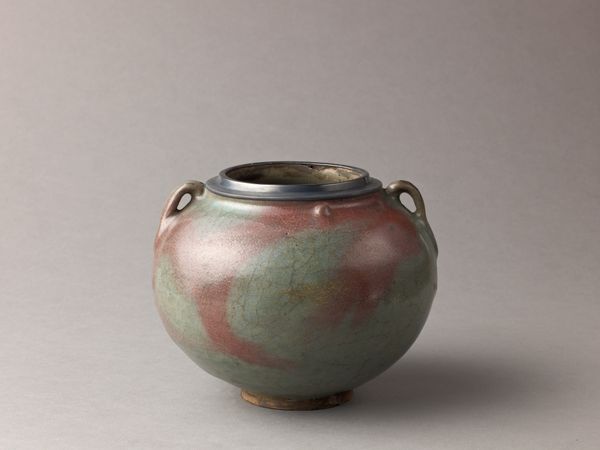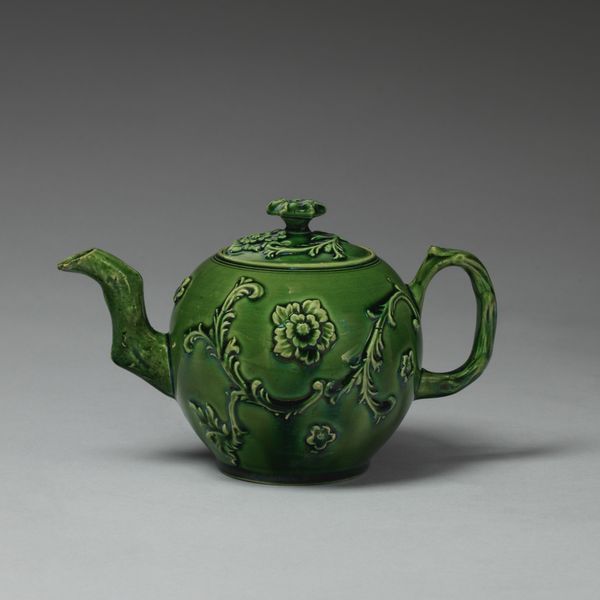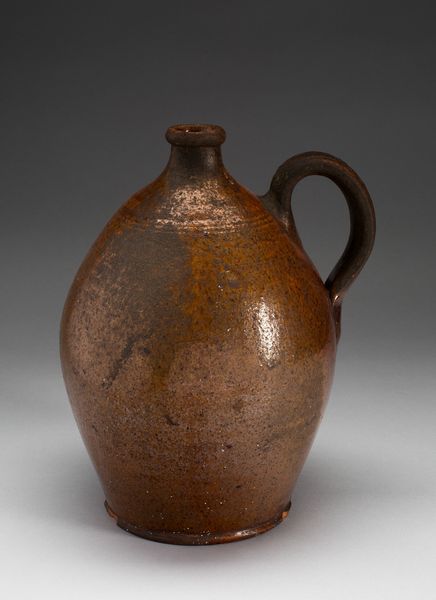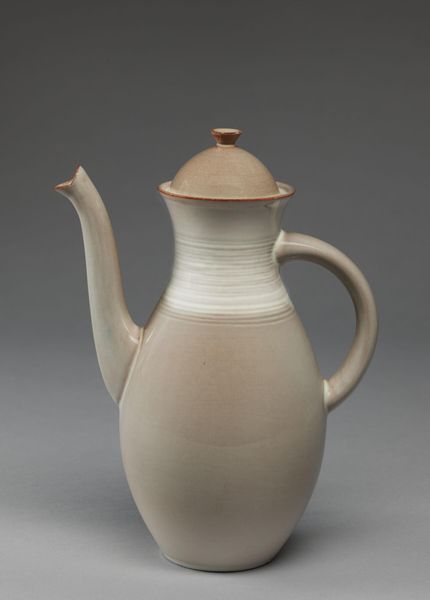
ceramic
#
asian-art
#
ceramic
#
ceramic
Dimensions: 11 3/4 x 7 1/8 x 7 1/2 in. (29.85 x 18.1 x 19.05 cm)
Copyright: Public Domain
Editor: We’re looking at an exquisite piece: a ceramic ewer in the shape of a gourd, created around the 12th century. Its soft, celadon glaze and unusual form make it so captivating. What do you notice first about the structure of this object? Curator: The piece exemplifies a considered approach to form, wouldn’t you agree? The almost perfectly spherical lower body contrasts beautifully with the elongated, ovoid shape of the upper section. Note the carefully calibrated diminishment of volume from the base, accentuating verticality, leading to the spout and handle completing the overall compositional movement. Editor: Yes, I see how the curves all relate to each other. And the handle mirrors the shape of the spout. What about the crackling effect on the surface? Is that intentional? Curator: The craquelure isn't necessarily intentional, but the piece is successful with it because it highlights the glaze, transforming the surface into a complex network of fine lines. These subtle details provide an added layer of visual intrigue, emphasizing the materiality of the piece. What is your view? Editor: I hadn't thought about the glaze as a distinct design element, but I see what you mean. So, by analyzing its shape and surface, we can understand its aesthetic qualities better, divorced from its function or origins? Curator: Precisely. Though we cannot disregard the cultural impact of functionality altogether, a study of this ewer solely in terms of visual composition and form can speak volumes, quite literally. Editor: I found your breakdown valuable; seeing the form as a relationship of shapes is a new and refreshing point of view. Curator: I agree, examining the material in this way deepens our aesthetic appreciation.
